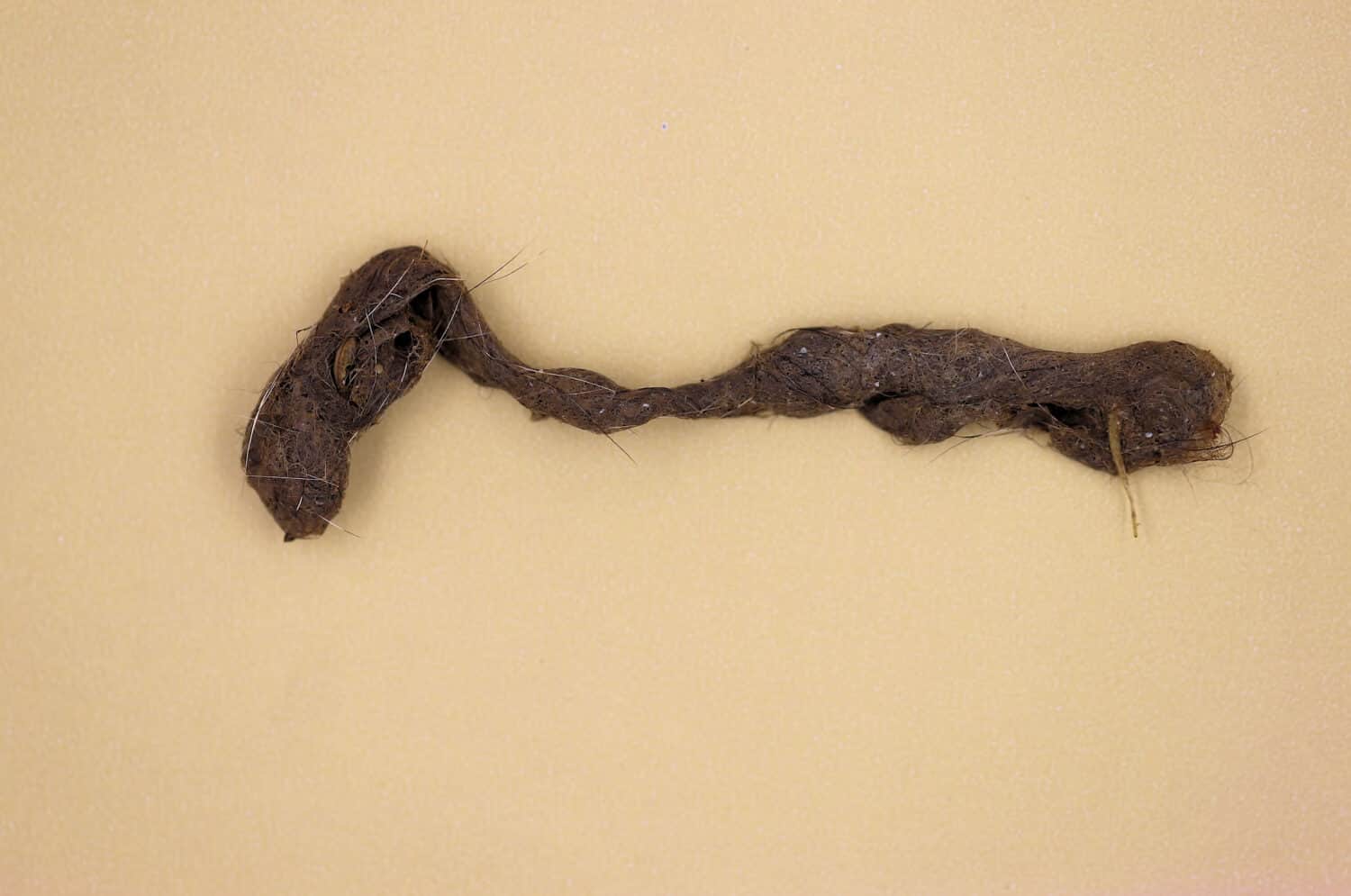Cats are notorious for hiding their pain. Evolutionary, they have learned to do so as a survival mechanism. Because sick or injured cats are more vulnerable to predators and other threats, domesticated felines have retained a a powerful instinct to “mask” or “camouflage” their vulnerabilities. While this has traditionally benefited cats in the wild, it can be challenging to know when our house cats need veterinary care as they often behave normally around humans and other animals, even when they aren’t feeling well at all.
One thing they can’t hide, however, is vomiting. Luckily, a cat vomit color chart can help discern when to worry and when to wait before taking your cat to the doctor. Just like humans, our cats throw up from time to time. And as gross as it can be to watch, listen to – or worse, step in! – cat vomit is not always cause for concern. In fact, it can have several benign causes. In their normal daily habit of grooming, for instance, these fastidiously clean beings ingest loose fur, which irritates the stomach lining. And because cats spend over half of their waking hours in the act of contentedly licking themselves, it is not at all uncommon for cats to throw up hairballs.

If your cat throws up a hairball, it is not usually anything to fret over, even if it is unsightly or makes you gag. However, if this happens very frequently, you can talk to your veterinarian about effective ways to manage hairballs.
©Wattlebird/Shutterstock.com
Cats might also throw up from eating too quickly or too much. Plus, any sudden change in diet can likewise irritate their digestive system and make them vomit. So be sure to transition your cats slowly to a new food.
Concerning Causes of Vomiting in Cats
While vomiting in cats is not always a medical emergency, we should never take it lightly. Sudden or excessive vomiting can indicate underlying chronic or acute health issues that require medical attention. All of us cat parents need to remain vigilant if our feline kids are experiencing digestive upset since it may be a symptom of infections or gastrointestinal ailments – like gastritis or inflammatory bowel disease. Vomiting can also indicate intestinal parasites or blockages, or other severe conditions such as kidney disease, liver problems, or diabetes. Throwing up is also a common response to ingesting poison.
Knowing the difference between when to monitor their situation patiently and when to be concerned is essential for safeguarding your cat’s health. Luckily, the color of feline vomit can offer important clues as to the cause. Here is a convenient cat vomit color chart for a quick reference of what each color means.

Understanding the color of your cat’s vomit can help you know when you need to seek medical attention.
©Juice Flair/Shutterstock.com
Important Note:
This chart is a reference guide only. It should not substitute for medical advice. If your cat is vomiting frequently or excessively – especially if they exhibit other concerning symptoms, including diarrhea or constipation, lethargy, dilated pupils, strange vocalizations, loss of appetite, or increased thirst – take them to your veterinarian immediately.
What the Color of Your Cat’s Vomit May Be Telling You
| Cat Vomit Color | What it Means/Possible Causes |
|---|---|
| White or Foam-like | Your cat may have eaten something that doesn’t agree with her stomach; eaten too much or too quickly; have a food allergy; or could have an intestinal blockage. |
| Yellow or Green | Usually indicates the presence of bile. This can be caused by intestinal inflammation, gastritis, or pancreatitis. Other causes include cholangiohepatitis, improper diet, parasites, infection, obstruction, liver or kidney disease, toxins, and cancer. |
| Brown | Brown liquid vomit might signal bleeding issues. Chronic vomiting may lead to inflammation in the mouth or esophagus, resulting in blood oozing into the vomit. Alternatively, brown vomit may suggest internal bleeding further down the gastrointestinal tract, possibly caused by ingesting a foreign object or experiencing a large hairball impaction, leading to inflammation and trauma. |
| Red or Black | Both red and black vomit in cats indicate the presence of blood and require immediate medical attention. Bright red vomit suggests fresh blood, potentially from bleeding in the mouth, throat, or esophagus, which could be caused by oral injuries, irritation, inflammation, or ingestion of blood from an external wound. On the other hand, black vomit indicates partially digested blood in the stomach, often associated with bleeding higher up in the gastrointestinal tract, like the stomach or small intestines, possibly due to gastric ulcers, gastrointestinal tumors, or other digestive system issues. |
| Orange | Often a sign of liver disease or pancreatitis. |
| Green | Can be the result of eating grass or dental chews, but might also signal an intestinal blockage. |
The photo featured at the top of this post is © YULIYA Shustik/Shutterstock.com
Thank you for reading! Have some feedback for us? Contact the AZ Animals editorial team.







